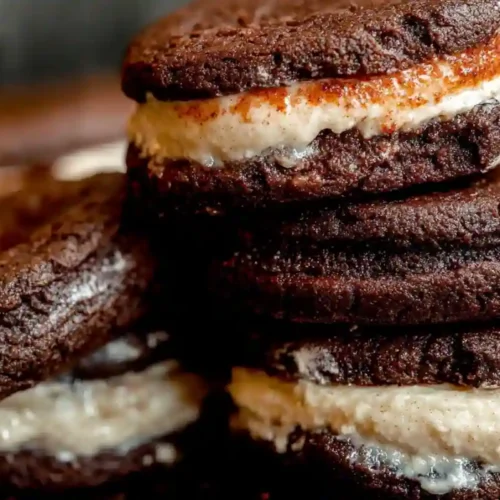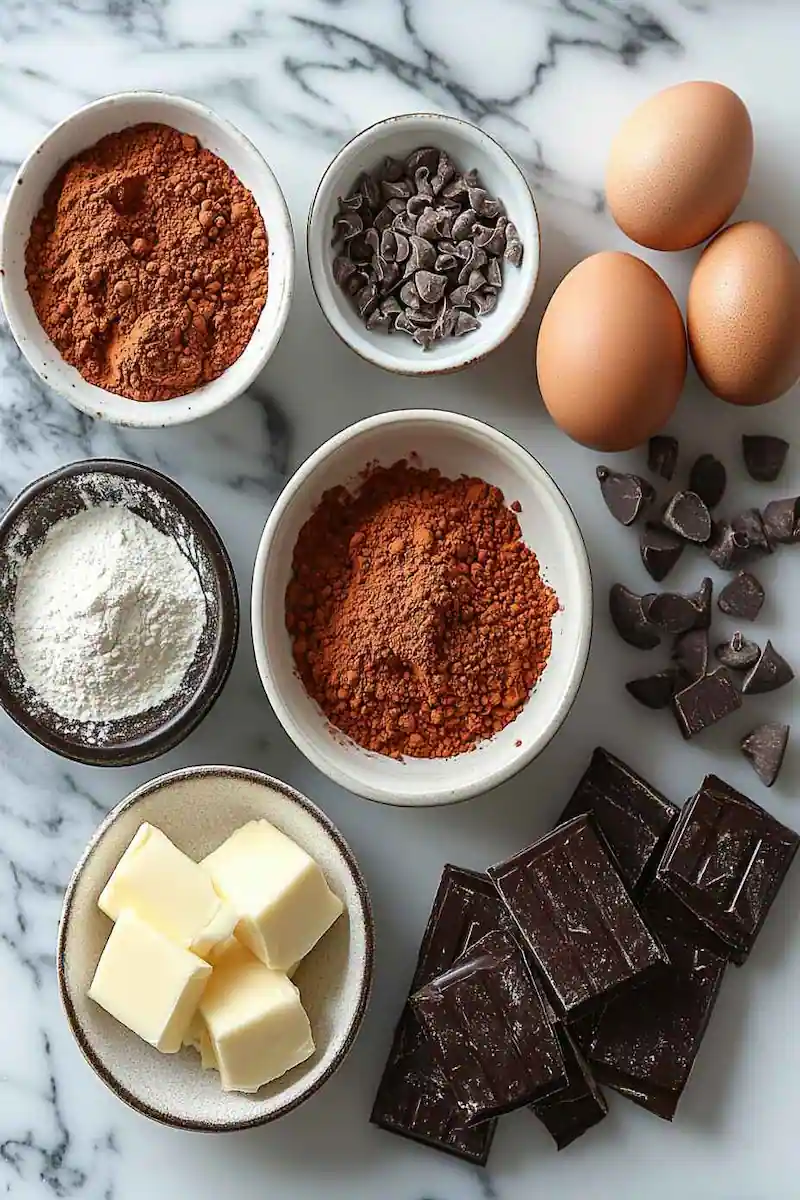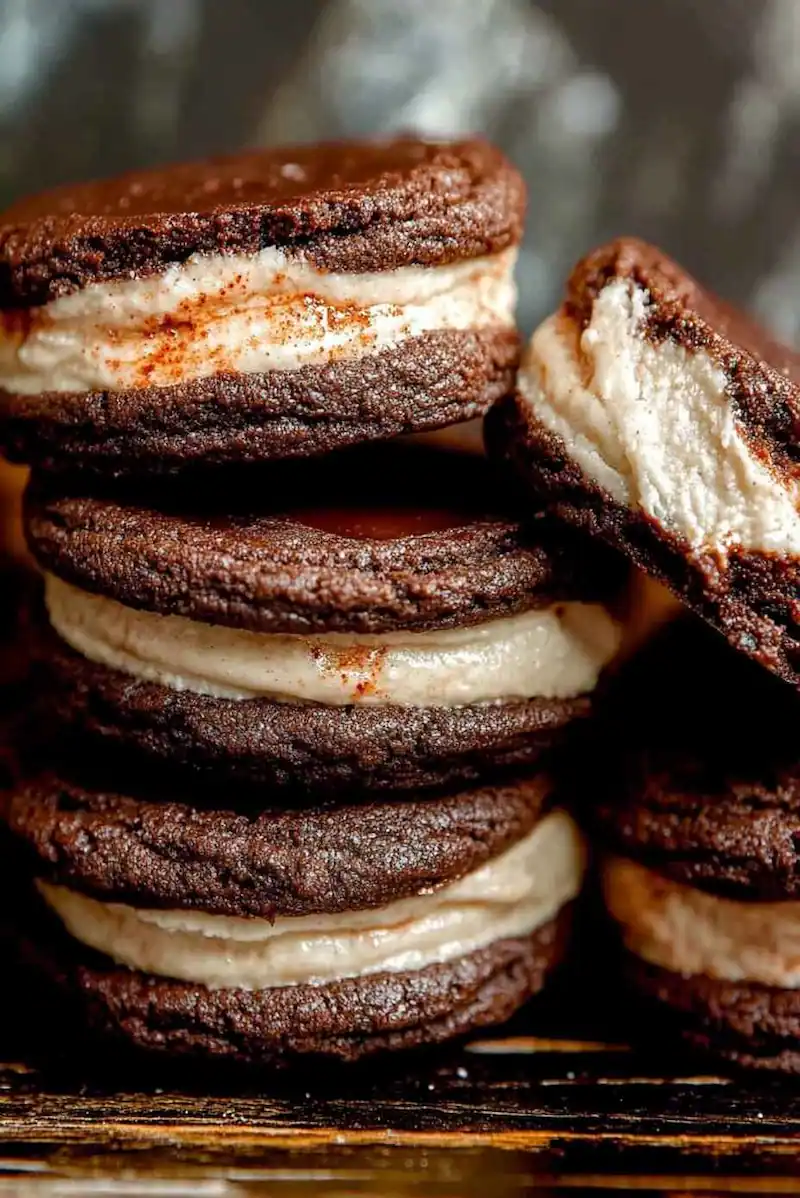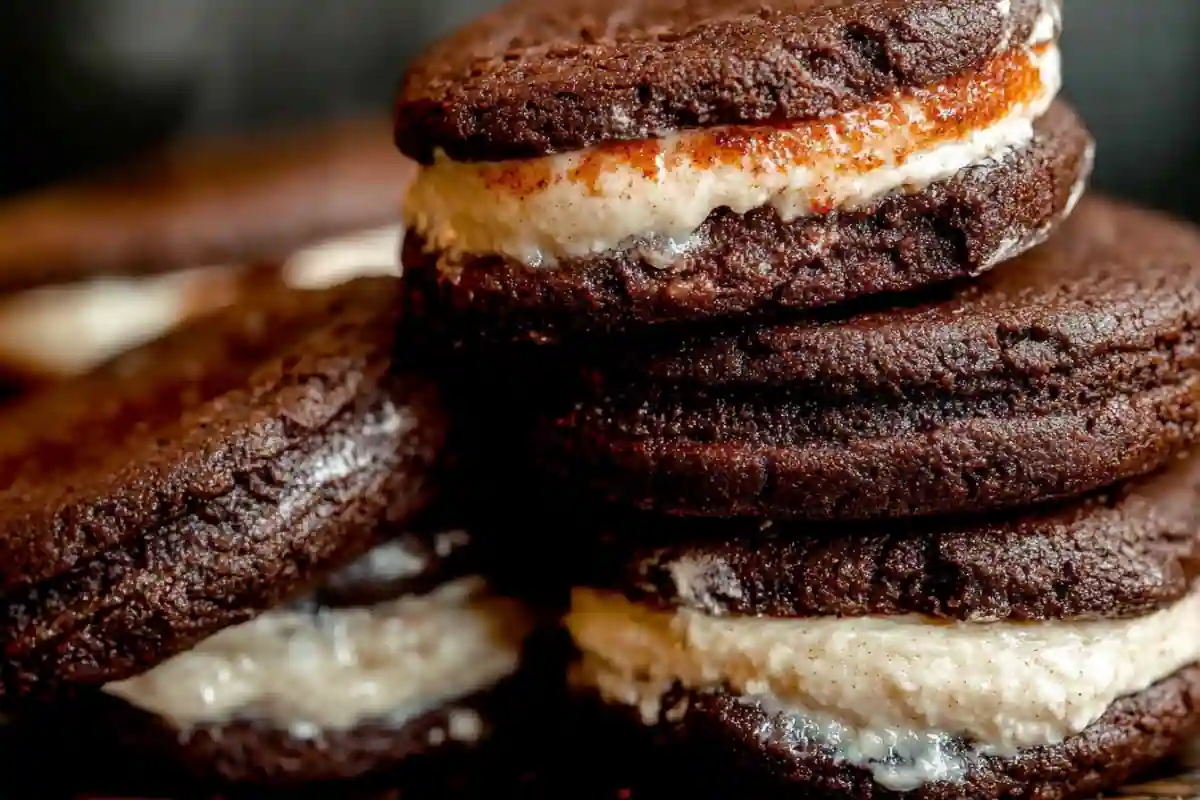There’s something unforgettable about the first bite of gochujang chocolate cookies. These treats blend rich cocoa with the savory, spicy depth of Korean chili paste for a flavor that’s both cozy and thrilling. In this article, we’ll dive into what makes these cookies stand out, how to bake them perfectly, and why they’re becoming the dessert you didn’t know you needed. Whether you’re a cookie lover or someone ready to try something new, you’ll find tips, answers, and inspiration here to make your own gochujang chocolate cookies with confidence and a bit of spice.
Table of Contents
The Story Behind Gochujang Chocolate Cookies
When sweet meets heat in the best way possible
I still remember the first time I had gochujang chocolate cookies. I was visiting a friend who had recently returned from Seoul and insisted I try her latest baking experiment. The cookies looked innocent enough—deep brown, slightly glossy, with a hint of spice on the nose. But that first bite? Mind-blowing. The gochujang’s subtle heat didn’t clash with the chocolate; it danced with it. It brought out a smoky depth in the cocoa that regular cookies just don’t offer.
Back in my own kitchen, I knew I had to make my version. Inspired by classic chewy chocolate cookies, I started testing recipes that embraced the balance of flavors: sweet, salty, spicy, and rich. They reminded me of how my Nonna would always add a secret ingredient to create something unforgettable. This was my new secret weapon.
I now keep a jar of gochujang next to my cocoa powder, because gochujang chocolate cookies are no longer just a trend—they’re a staple. And if you’re looking for a bold but balanced treat, these cookies might just change your baking game.
Why Gochujang Works with Chocolate
The science of spicy-sweet flavor pairing
At first glance, adding chili paste to cookies might seem odd. But gochujang isn’t just any chili paste. It’s fermented, which means it has deep umami notes—just like soy sauce or miso. When combined with dark chocolate or cocoa powder, it doesn’t just add heat; it adds dimension.
Gochujang chocolate cookies benefit from that complexity. The chocolate brings bitterness and richness, while the gochujang adds sweet heat and tang. The result is a cookie that tastes both familiar and surprising—a chewy, soft texture with occasional bursts of heat that make each bite memorable.
How to Make Gochujang Chocolate Cookies at Home

Gochujang Chocolate Cookies
Ingredients
- 1/2 cup unsalted butter softened
- 1/2 cup brown sugar
- 1/4 cup white sugar
- 1 large egg
- 1 tbsp gochujang paste start with 1 tbsp, adjust to taste
- 1 tsp vanilla extract
- 1 cup all-purpose flour
- 1/3 cup unsweetened cocoa powder
- 1/2 tsp baking soda
- 1/2 tsp salt
- 1/2 cup dark chocolate chunks or chips
Instructions
- Cream butter and sugars together until light and fluffy.
- Mix in egg, gochujang, and vanilla extract.
- In a separate bowl, whisk flour, cocoa powder, baking soda, and salt.
- Gradually add dry ingredients to wet ingredients. Fold in chocolate chunks.
- Chill dough in fridge for 30–60 minutes.
- Preheat oven to 350°F (175°C). Line baking sheet with parchment paper.
- Scoop dough into balls and place on baking sheet.
- Bake 9–11 minutes until edges are set but centers are soft.
- Cool on pan for 5 minutes, then transfer to rack to cool completely.
Notes
Simple ingredients with an unexpected twist
Making gochujang chocolate cookies is easier than you might think. The base is similar to any soft, chewy chocolate cookie: flour, cocoa powder, brown sugar, eggs, and butter. The magic happens when you stir in a spoonful (or two) of gochujang. The spicy paste blends right into the batter, giving it a rich, red-tinted swirl and adding just the right level of heat.
For best results, use room temperature butter and eggs. Cream the butter with sugar until fluffy, then add in the gochujang and eggs. Combine the dry ingredients—flour, baking soda, salt, cocoa powder—and slowly mix into the wet ingredients. Chill the dough for at least 30 minutes before baking; this helps intensify the flavor and creates that perfect chewy texture.
One of the best parts? The aroma while they bake—rich, chocolatey, with a tiny hint of smoke and spice. They’re not fiery, but they leave a warming finish that lingers on your palate. Try adding chunks of dark chocolate or chopped nuts for extra texture.

Tips to Nail the Flavor Every Time
Balancing spice and sweetness just right
The key to a standout gochujang chocolate cookie is balance. Too much gochujang, and the heat overpowers everything. Too little, and you miss the unique flavor profile. Start with one tablespoon of gochujang for every dozen cookies and adjust based on your heat tolerance. You want a slow, pleasant warmth—not a burn.
Using brown sugar instead of white adds depth and moisture, which pairs beautifully with gochujang’s fermented richness. For added complexity, try mixing in a splash of espresso powder or a sprinkle of sea salt before baking.
Finally, don’t skip chilling the dough. It allows the flavors to develop and ensures your cookies bake thick and chewy, not thin and flat.
Perfecting Texture & Storing Gochujang Chocolate Cookies
Avoiding flat cookies and baking like a pro
There’s nothing more disappointing than a batch of cookies that turn out flat or dry. With gochujang chocolate cookies, getting the texture right is crucial—they should be soft and chewy with slightly crisp edges and a gooey center. A few small changes can make all the difference.
First, watch your flour-to-fat ratio. Too little flour, and your cookies will spread too thin. Too much butter or gochujang, and they can melt too quickly in the oven. Use a kitchen scale if you can—it’s the easiest way to stay consistent.
Baking soda is your friend here. It reacts with the acidity in gochujang to give the cookies just enough rise. Don’t overmix your dough once the dry ingredients go in, and always preheat your oven fully.
And don’t forget to chill the dough. This is one of the best tricks to avoid flat cookies. It firms up the butter and helps the dough hold its shape as it bakes. A short chill (30 minutes to an hour) makes a noticeable difference.
Want to go even further? Test small batches. Bake one or two cookies before doing the full tray. You’ll see if your dough needs adjusting before it’s too late.
Storing and Keeping Them Fresh
How long do gochujang chocolate cookies last?
Freshly baked gochujang chocolate cookies will stay delicious for about 4–5 days when stored in an airtight container at room temperature. Make sure they’re fully cooled before storing to prevent steam from softening them too much.
For longer storage, freeze baked cookies in a single layer, then transfer to a sealed bag. They’ll last up to three months. You can also freeze the raw dough—just scoop it into balls, freeze, and bake straight from frozen. Add a minute or two to your baking time.
Worried about flavor fading? A small piece of bread in the container can help cookies stay soft, and reheating in a warm oven for 2–3 minutes revives their gooey texture beautifully.
This trick works for most of our bold-flavored cookies, like Chipotle Dark Chocolate Cookies, which store and reheat similarly.

Serving & Pairing Gochujang Chocolate Cookies
Making them party-ready or weeknight-perfect
Gochujang chocolate cookies might sound fancy, but they’re incredibly versatile. Serve them warm with a scoop of vanilla ice cream for an unexpected sweet-heat dessert. The cold creaminess of the ice cream tones down the spice and makes the chocolate pop.
Hosting a dinner party? Stack these cookies with a drizzle of gochujang caramel and a sprinkle of sea salt for dramatic presentation. Want a grown-up treat? Serve them with espresso or a bold red wine like Shiraz—the spicy, chocolatey notes play beautifully together.
They also shine in simpler moments: with an afternoon cup of tea, as a lunchbox surprise, or crumbled into yogurt for a spicy-sweet parfait.
At Blink Recipes, we love combining bold flavors with cozy presentations. That’s why our Ginger Chili Snickerdoodles and Smoky Cocoa Biscotti work so well; they add heat without losing comfort.
Flavor Pairings That Elevate the Experience
More than just chocolate and spice
Once you’ve mastered the base of gochujang chocolate cookies, there’s room to experiment. Try folding in toasted sesame seeds or chopped roasted peanuts for crunch. Want to take it a step further? Mix in candied ginger for a sweet zing or white chocolate chips for creamy contrast.
The gochujang already delivers sweet, savory, and spicy notes, so your additions should either complement or contrast without overpowering. Use darker chocolates (72% and up) for a more refined bite, or milk chocolate for a mellow, kid-friendly version.
Don’t be afraid to think outside the cookie jar. We’ve turned these cookies into ice cream sandwiches, cheesecake crusts, and even the base for a spicy chocolate trifle.
These cookies are the ultimate blank canvas for creative bakers; and just like our Maple Gochujang Roasted Pecans, they’re proof that spice and sweetness belong together.
💡For more recipes, follow me on Facebook and Pinterest.
Frequently Asked Questions
What do gochujang cookies taste like?
Gochujang cookies have a unique sweet-savory profile. The chocolate brings rich, bittersweet depth, while gochujang adds gentle heat and a hint of tang. The result is a chewy, flavor-packed cookie with a warm, slightly smoky finish that lingers in the best way.
Do chocolate cookies go bad?
Yes, like all baked goods, chocolate cookies have a shelf life. At room temperature in an airtight container, they last 4–5 days before starting to dry out or lose flavor. For longer freshness, you can freeze them for up to 3 months without compromising taste.
How do you avoid flat chocolate chip cookies?
To avoid flat cookies, chill the dough before baking, use room temperature butter (not melted), and measure your flour correctly. Also, avoid overmixing once the dry ingredients are added. All these help the cookies rise and stay thick and chewy.
What makes cookies fluffy and not flat?
Fluffy cookies rely on a balance of baking soda, fat, and flour. Creaming butter and sugar properly adds air, and using chilled dough slows spreading in the oven. If you want fluffier cookies, add an extra egg yolk or a touch more flour to stiffen the dough.
Conclusion
Gochujang chocolate cookies are more than just a baking trend; they’re an unforgettable blend of bold and cozy. Whether you’re craving something sweet with a kick or want to impress guests with a cookie they’ve never tried before, this recipe delivers. With just a few simple ingredients and a little curiosity, you can transform your usual chocolate cookie into something daring, delicious, and deeply satisfying.
So go ahead, get out that jar of gochujang, turn on your oven, and make a batch of cookies that surprise and delight in every bite.

